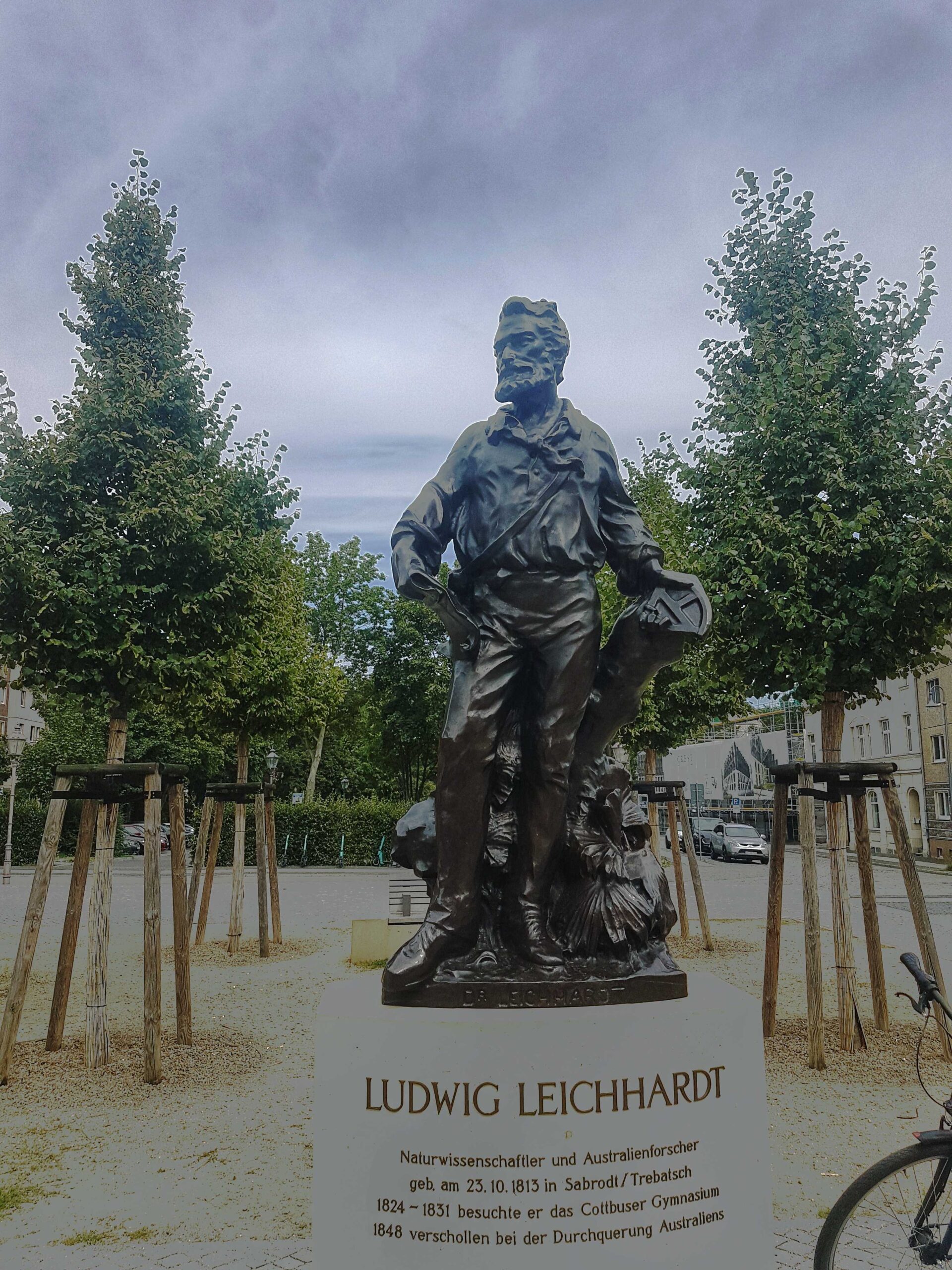
Cottbus City Tour: postcolonial meets postsocialist
When you think of Cottbus, its (post)colonial entanglements might not be the first thing that come to mind. But a small group affiliated to the local university have taken up the task of confronting just these aspects of the city’s history. City tours of this kind can be found with increasing regularity across Germany (for example, in Potsdam), mostly undertaken by individuals invested in the political project of having conversations about Germany’s colonial pasts and presents, and the Cottbus group is no exception in this regard. At the tail end of August, on a broiling late summer day, I was lucky enough to be allowed to tag along on this tour in Cottbus, which bills itself not just as postcolonial, but as postcolonial-and-postsocialist.
The first stop on the tour is at a statue of Ludwig Leichhardt, a 19th-century ‘explorer’ and natural history scholar, whom the town claims, ostensibly with some pride, as one of its sons – for instance, with the statue and the naming of a local school after him. Leichhardt is most well-known for his work in Australia, where he was one significant cog in a larger imperial machinery of colonial knowledge production. The tour draws out these connections, as well as the resonances with the Oberkirchplatz square in which it stands: just outside the St Nikolai church, the setting of the city’s so-called Monday demonstrations, peaceful protests against the government of the GDR that took place from 1989 to 1991, and which today is also the setting of radical right-wing gatherings. In this way, the tour is able to tease out the fascinating layers of history that converge in this space.
The next stop is in the church itself, where a plaque commemorates the fallen members of the ‘Schutztruppe’, that is, the German colonial soldiers, who died in the Herero-Nama uprising of 1904-1908 in what is today Namibia and what was then called German South-West Africa. The German troops’ actions have been acknowledged as constituting genocide; the plaque – without contextualization of any sort – commemorates some of the soldiers who participated in it.
The third stop is an artwork representing Hermann Pückler, another of the city’s sons commemorated in its urban landscape. Pückler was known in his day (he lived from 1785-1871) as a prolific travel writer. His works, and indeed much of his own self-styling, are stark instances of Orientalism – exoticization and fetishization through a white, male, European gaze – while, in Pückler’s case, very much casting himself as the hero. There are darker aspects to this story I won’t go into here.
The final stop is, essentially, an empty ruin: the site of what was once the Stadtpromenade. In the GDR, this was a very popular space for leisure activities where people might gather on weekends to socialize amongst the fountains, or have coffee at the Mokka-Milch-Eisbar, a café replete with Soviet style space travel imagery. With reunification, the whole area was unceremoniously destroyed to make space for the development of a mall. Today, greenery grows over the rubble that’s left, and what to do with the space is still fodder for local political campaigns.
At each of the stops, the histories are of course more complex than rendered here, and if you ever have the opportunity to check it out for yourself, it comes highly recommended. The tour’s playing off against each other of the colonial and socialist, and the living in the ‘post’ of both, is effectively achieved, and is one demonstration of how thinking these things together can be illuminating.
